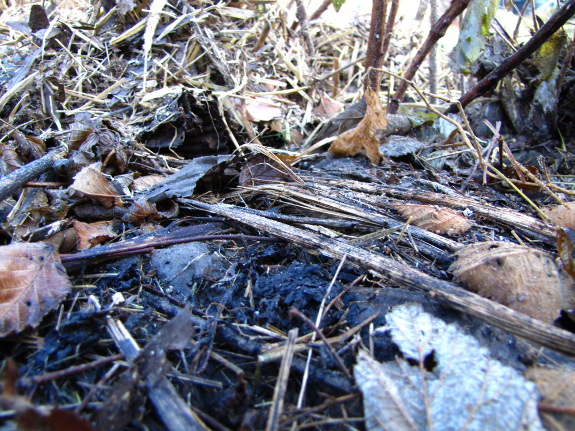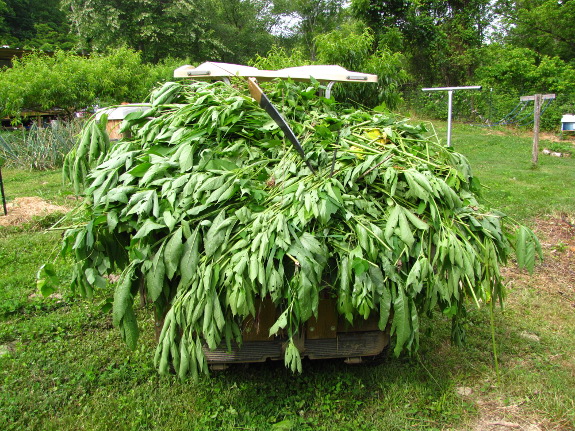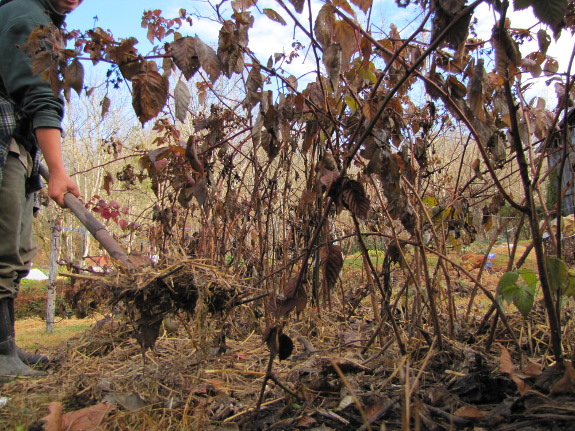
Ragweed and wingstem mulch, six months later

While I'm obsessing over
mulch, I thought you might enjoy seeing a followup about my wingstem
and ragweed mulch
from the middle of June. This is far from a controlled experiment
since three rounds of chicks spent their childhood scratching under the
 so-mulched raspberries and
blackberries, adding extra nitrogen and stirring things up for
ultra-fast composting. So I wasn't surprised to see that all of
the weed leaves had completely disintegrated and even the stems were
quickly disappearing into the dirt.
so-mulched raspberries and
blackberries, adding extra nitrogen and stirring things up for
ultra-fast composting. So I wasn't surprised to see that all of
the weed leaves had completely disintegrated and even the stems were
quickly disappearing into the dirt.
Without the cardboard
layer underneath, I suspect the mulch wouldn't have held out as long as
it did, but there were actually very few living weeds under the berry
bushes when I weeded this week. And the fall raspberries were
huge, delicious, and copious down there, perhaps just from the chicken
manure, but also perhaps due to the slowly decomposing weed
carcasses. So even though the mulch was a bit short-lived and
needed to be topped off before winter, it's probably worth doing again.

The results in the woods
(the source of the wingstem and ragweed) were equally striking --- no
more tall weeds. This might be a pro or a con, depending on what
you're trying to do with an area. If you want to get rid of tall
weeds so you can grow shorter plants livestock will eat more readily,
it might be a great idea to cut the wingstem and ragweed just before
they bloom in June; but if you enjoy the flowers for your honeybees,
this might not be such a good source of mulch.
I'm not sure the effort
to biomass ratio is good enough to make this a regular part of our
mulching campaign, but I'm going to keep it in the running.
Want more in-depth information? Browse through our books.
Or explore more posts by date or by subject.
About us: Anna Hess and Mark Hamilton spent over a decade living self-sufficiently in the mountains of Virginia before moving north to start over from scratch in the foothills of Ohio. They've experimented with permaculture, no-till gardening, trailersteading, home-based microbusinesses and much more, writing about their adventures in both blogs and books.
Want to be notified when new comments are posted on this page? Click on the RSS button after you add a comment to subscribe to the comment feed, or simply check the box beside "email replies to me" while writing your comment.
